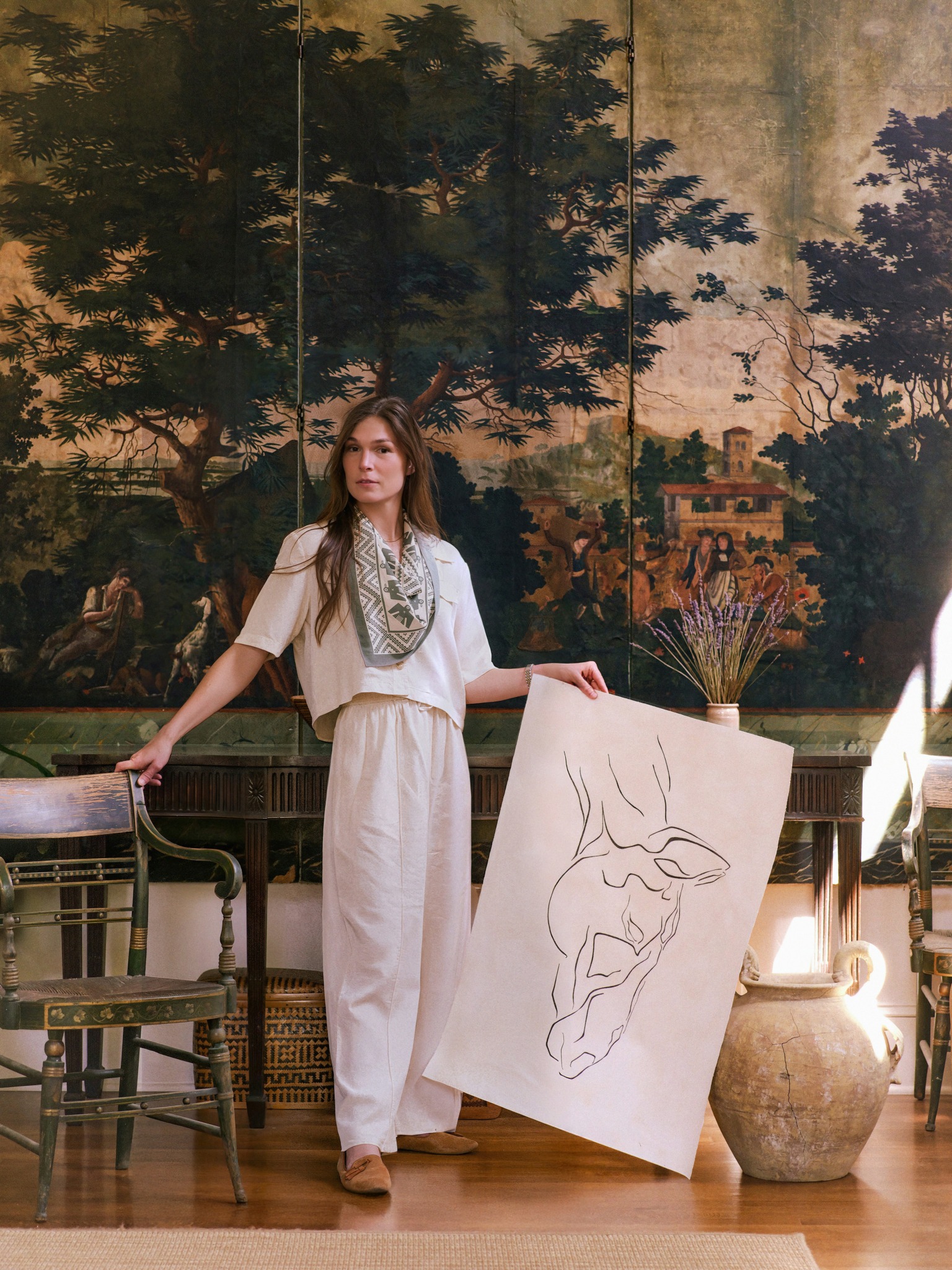We caught up with the brilliant and insightful Kay Calandruccio a few weeks ago and have shared our conversation below.
Kay, looking forward to hearing all of your stories today. Before we get into specifics, let’s talk about success more generally. What do you think it takes to be successful?
Drawing, painting—creating with my hands—has always brought me joy. But for a long time, the idea of putting my work into the world felt incredibly vulnerable. One of my biggest fears was failure and rejection. A college counselor once told me I was limiting myself by pursuing the arts—and that was all it took to redirect my career focus.
It took nearly sixteen years to rebuild the confidence to share my work publicly, to take on commissions, and to treat my art as a serious business. It was not until family and friends began asking for commissions that something shifted. What once felt intimidating, sharing my work publicly, started to feel like an extension of the joy I already found in creating.
That is not to say the doubt disappears entirely, I still feel moments of hesitation when trying something new. But I’ve learned to treat those feelings as signs of growth, not boundaries. My confidence grows with each new piece I create and nothing affirms that more than hearing how the work resonates with someone else. The joy I feel while creating is the same joy I hope my art passes on to others.
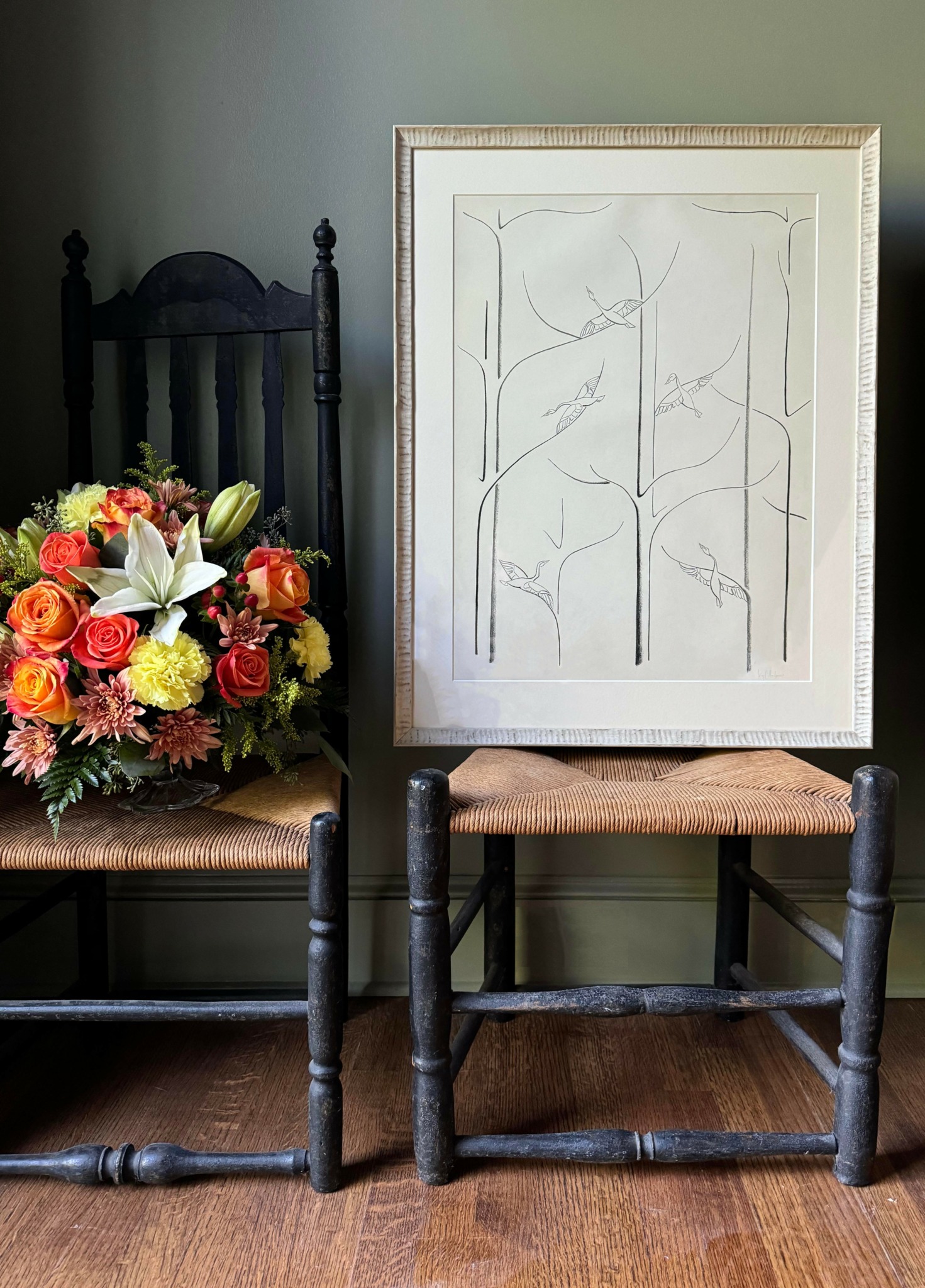
Kay, before we move on to more of these sorts of questions, can you take some time to bring our readers up to speed on you and what you do?
I was born into a highly creative family, and from a young age I was encouraged to explore the magic of art. Before I could read and write, I would arrange stones and twigs into shapes, and those shapes into patterns. I was encouraged to develop my own artistic language and express myself through drawing. The rhythmic depictions of nature in Native American art and the work of Mississippi Gulf artist Walter Anderson fascinated me as a child. In elementary school I spent hours learning from them, tracing their animal forms and intricate designs, training my hand and eyes. Although you could say I am technically self-taught, they were my real teachers.
For me creation requires being deeply vulnerable, and it took decades for me to build the courage to share my art with the world. I have received a number of commissions in the past year of embracing my calling as a professional artist, but Phidian Frieze is one of the first expressions of what I recognize as my mature, individual style.
When my brother, Collier, who is the director of Klismos Gallery, was asked to exhibit at the Palm Beach Atelier in the historic Paramount Theater, he asked me to create a central work for the room. He gave me a prompt that required me to engage with and distill a Classical cultural touchstone: the Panathenaic Frieze of the Parthenon. I grew up on the back of a horse and still spend my days – when not making art – caring for horses. No other creature in the world has impacted me more, intimately tied to my development as a person and artist. Of all of the magnificent forms in the marble reliefs, I unsurprisingly found myself most drawn to the horses and made the decision to focus solely on them.
For weeks I studied the sculptures, creating dozens of studies. With each iteration, I explored the horses’ geometry and manipulated leg and head placement. How the lines describing different muscles, hair, hooves and joints combined together required me to develop a new linear language. The completed piece was executed on cold pressed paper washed with watercolor, intended to evoke the weathered marble of the Parthenon. After experimenting in charcoal and ink, the final version was drawn in ink, giving a depth of color and precision to every element while emboldening the whole composition. Even in its smallest detail and interaction of lines, I wanted to create the sense of grand movement and strength as in the work of the 5th century Greek sculptors .
I selected and acquired a museum quality 1890s American giltwood frame from the collection of Eli Wilner. The two, frame and artwork, did not meet until the day before it was to be exhibited, but now Phidian Frieze is appropriately enclosed in a golden laurel wreath, which Collier and I assembled together and hung over the marble mantel of the Atelier.
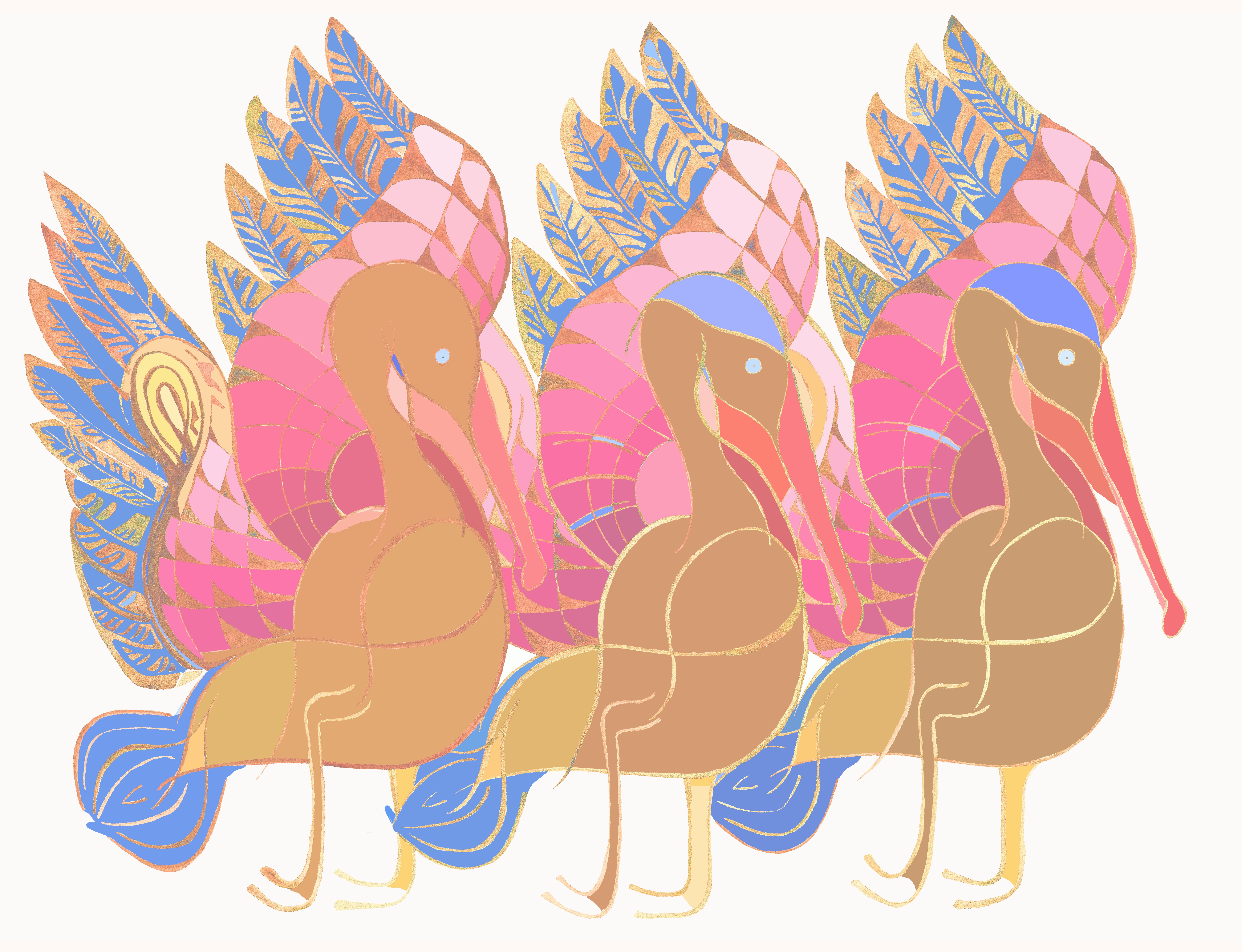
We’d love to hear the story of how you turned a side-hustle into a something much bigger.
Although I kept my art private for years, I never stopped creating. It was always something I did in my free time for the sheer joy of it. Professionally, I spent most of my career in the corporate world. At one point, I moved to California for a sales role and decorated my beachside apartment with some of my work. Hosting friends regularly, I began to notice people responding to the pieces hanging on my walls. Before long, friends and family started reaching out to request commissions.
This continued for a couple of years, but even with growing interest and encouragement, I wasn’t ready to leave the comfort and stability of my full-time job. I took a position with a tech startup and moved back to my hometown of Memphis, TN to get married. During my honeymoon, I received an email letting me know my job had been eliminated.
At the time, it felt like my life had been turned upside down—cross-country move, newly married, and now unemployed. But in hindsight, it was exactly the push I needed. When we returned home, I sat down with my husband to figure out what was next. From the very beginning, he encouraged me to take my artistic talent seriously and to explore whether I could combine my creative work with the business skills I’d developed in networking and sales.
It was a real adjustment to shift from making art for myself to creating with a business mindset. I had to rely not only on my own joy in the process, but on the hope that others would find joy in my work too—and want to invest in it. I’ve since expanded my offerings, particularly into portraiture, which has been incredibly well-received. Still, I believe it’s my line work—like what I developed for The Phidian Frieze—that has the potential to define my artistic identity and set me apart.
There is a lot that I am still learning as I grow this business—how to create content, market myself, and track what’s working. But it has been one big, rewarding adventure, and I am so grateful to be on this path.
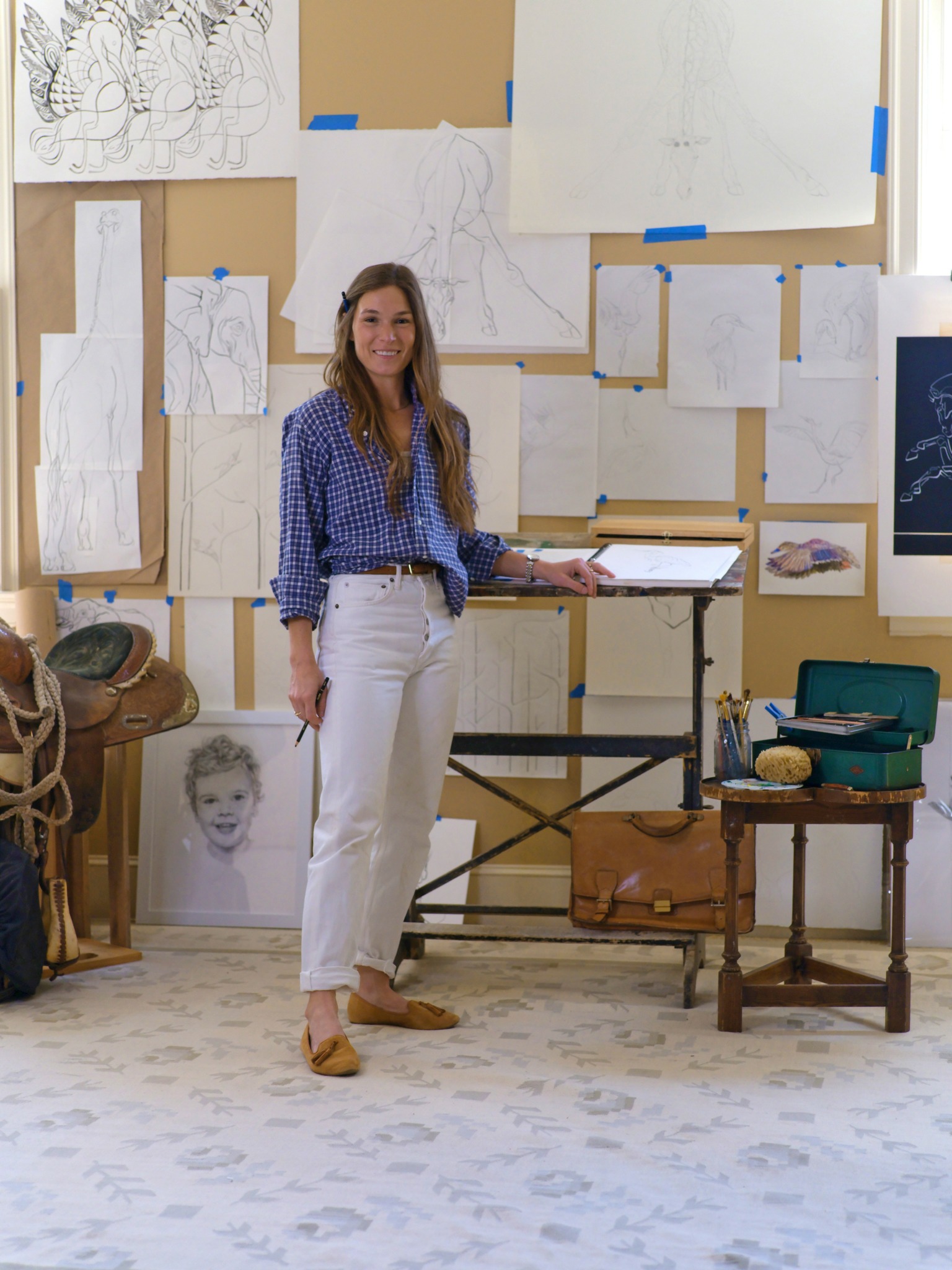
What do you think helped you build your reputation within your market?
My brother, Collier Calandruccio, who is also the director of Klismos Gallery, has played a central role in helping me build my reputation as a serious artist. From the beginning, he encouraged me to focus on creating genuine, original work—art that reflects my unique voice rather than trends or comparisons.
Developing a distinct style takes time, patience, and a lot of practice. But I’ve learned to trust that process—to hold off on sharing until the work truly moves me. I believe that’s what builds a lasting reputation: presenting pieces that reflect not only skill, but intention and depth.
Collier has also guided me in how I present myself and my work, reminding me that professionalism and presentation are almost as important as the art itself. We’ve even collaborated—he contributes museum quality antique frames, and I create my line drawing compositions. The result is a visual dialogue between eras that has resonated with collectors and art lovers alike. Especially through this partnership, I’ve been able to build a body of work rooted in precedent but distinctly pursuing my own path.
Contact Info:
- Website: https://kaycalandruccio.com
- Instagram: @calandruccio.art
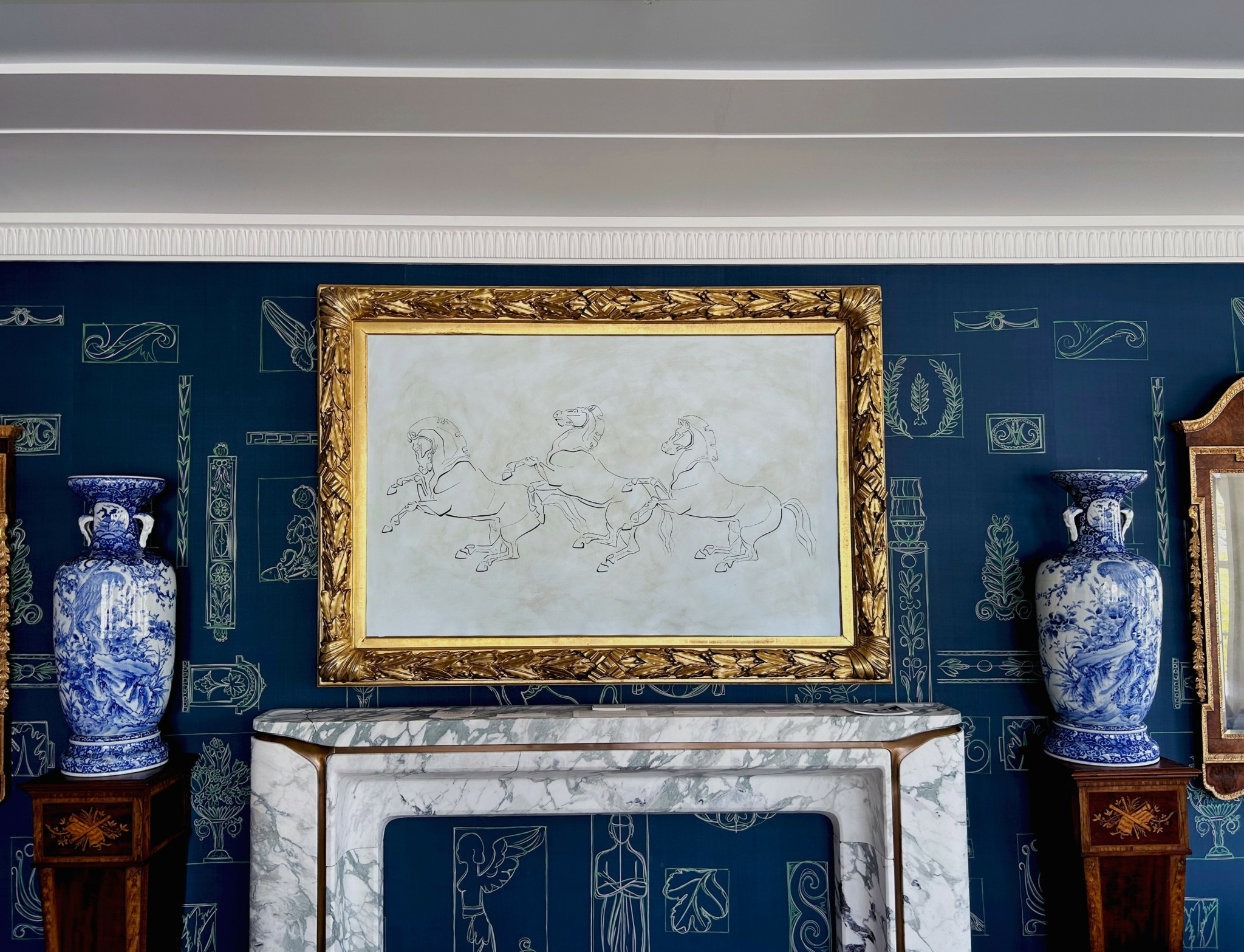
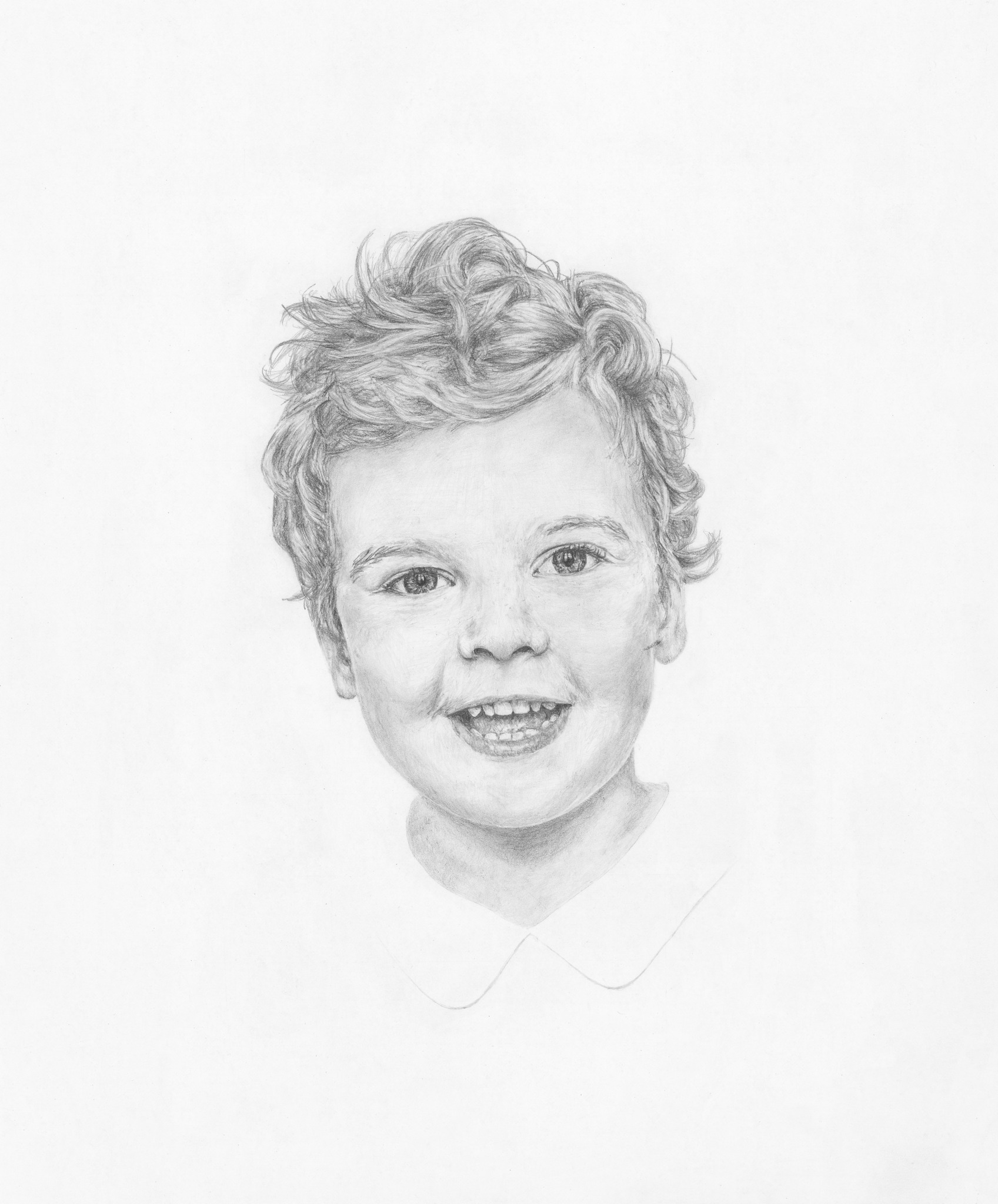
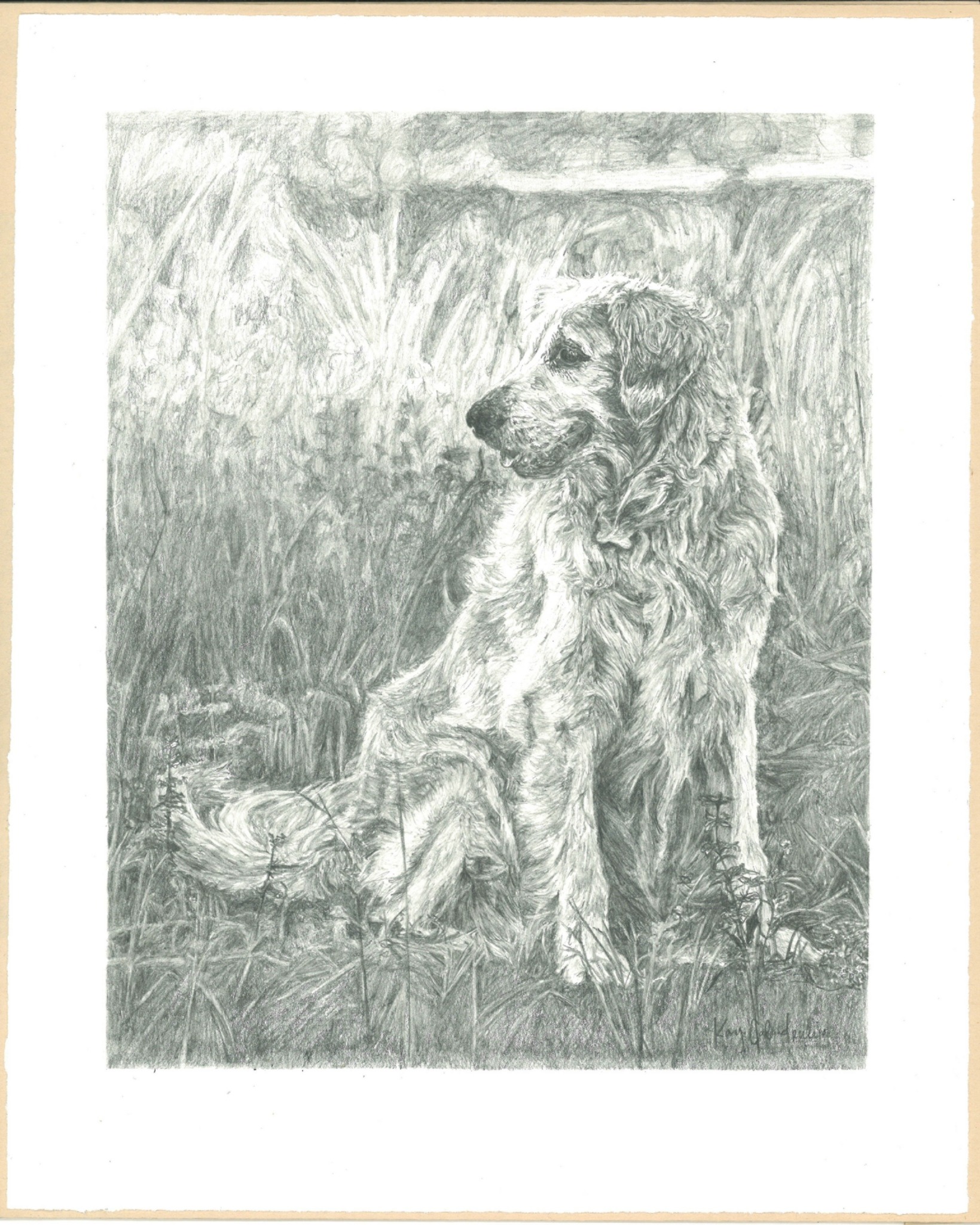
Image Credits
Dylan Hall


